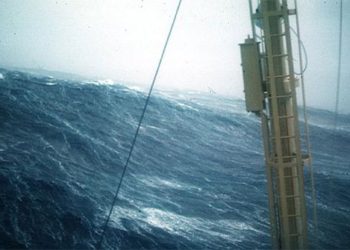Some shipwrecks from centuries ago contain enormous quantities of gold, silver, and precious stones, such as the San José shipwreck off the coast of Colombia.
The San José Ship in the Caribbean Sea off Colombia
Often referred to as the “most valuable shipwreck in the world,” the San José, a Spanish naval warship, was carrying 200 tons of gold, silver, and precious gems when it sank in 1708 during a battle with British ships. Estimates suggest that the treasure aboard is worth anywhere from several billion to over 20 billion USD. Various parties are disputing ownership of the wreck, including a U.S. salvage company (which claims to have discovered the wreck in 1982), Colombia (which asserts it found the wreck at a different location in 2015), Spain (which claims it still owns the ship from 300 years ago), and a Bolivian tribe (which argues that their ancestors were taken to mine the silver from the ship).
Regardless of the actual value of the treasure, Colombian law stipulates that all artifacts cannot be bought or sold. The San José ship and its accompanying treasure remain on the ocean floor.

Part of the San José shipwreck on the ocean floor. (Photo: Independent).
The Bom Jesus Ship off the Southern Coast of Namibia
In 2008, a geologist searching for diamonds in an area known for its gemstone mines instead discovered a copper ingot. Archaeologists went on to find 22 tons of copper ingots (used for trading spices at the time), along with over 100 elephant tusks, a bronze cannon, swords, astrolabes, long guns, and armor in quantities reaching into the thousands. They also found over 200 gold coins, primarily from Spain, depicting King Ferdinand and Queen Isabella, along with some from Venice, the Moors, and France.
This cargo helped identify the wreck as the Bom Jesus, a Portuguese merchant ship lost in 1533 on its way to India. The ship and its entire cargo have remained intact for nearly 500 years. It is also the most valuable ancient shipwreck discovered off the lower Sahara coast of Africa.
The Belitung Ship in the Java Sea off Belitung Island, Indonesia
In 1998, local fishermen diving for sea cucumbers discovered a coral block embedded with pieces of porcelain. This discovery eventually led to a 9th-century Arab cargo ship containing over 60,000 artifacts made of gold, silver, and Tang dynasty ceramics. Notably, the ceramics reflect the pottery industry during the Tang dynasty and trade along the Silk Road. At that time, China increased its imports of textiles, pearls, coral, and sandalwood from Persia, East Africa, and India. In the 9th century, Chinese ceramics became fashionable, but camels were unsuitable for transporting fragile products. Thus, an increasing number of bowls and dishes were shipped by sea via the “maritime Silk Road.”
According to John Guy, the South Asian and Southeast Asian art curator at the Metropolitan Museum of Art in New York, this shipwreck is among the most valuable and carried the largest quantity of goods (including gold and ceramics from southern China in the early 9th century) ever discovered in a treasure trove.
The Palmwood Ship in the Wadden Sea off the Netherlands
Named after the sturdy wooden boxes containing valuable cargo aboard, the Palmwood ship carried riches from around the world and reveals the lifestyle of the 17th-century elite. Inside these broken crates, divers collected over 1,500 artifacts, including an embroidered dress with silver thread, an exquisite damask cloak, and a ruby-dyed velvet gown made from insects found only in the Americas. Researchers also discovered a silver goblet, fine dining sets, luxurious personal hygiene kits, Persian rugs, and a collection of 32 leather-bound books dating back to the 16th and 17th centuries.
While conservators have examined the objects collected from the ocean floor, much of the Palmwood wreck remains unexcavated and is covered by a net to protect it from the effects of ocean currents.
The Santo Cristo de Burgos Ship in the Pacific Ocean off the Coast of Oregon, USA
The Spanish warship veered off course and disappeared while traveling from the Philippines to Mexico in 1693, likely lying off the coast of present-day Oregon. About a dozen pieces of wood have been found from the ship’s hull. The cargo included luxurious Chinese silk and porcelain. Beeswax barrels imported from Europe have washed ashore for centuries after the ship sank. Countless pieces of blue and white ceramics, as well as large wooden beams, hint at the nearby wreck.





















































